|
In the lead up to our East~West Tea Drinking Traditions exhibition in May, Paul Davis and Jacqueline Clayton presented a brilliant workshop for us, focusing on Japanese tea bowls and tea ceremony. The day was beyond expectations and although we didn't get to the clay ourselves, we were absorbed by everything Paul and Jacquie had to offer. Not only did we come away with so much knowledge on the construction of Japanese tea bowls, but insight into the tea ceremony from Paul's personal experience and a wonderful presentation from Jacquie that brought the tea traditions of China, Korea and Japan into perspective, and gave us a taste of how Europe and England came to develop their own traditions and styles. Here is an excerpt and a few images from an article in this month's Newsletter.  “Every tea bowl has a front.” Paul Davis There are many types of tea bowls. Winter bowls are narrower and therefore keep the tea warm while Summer bowls are shallower and broader and the tea cools more quickly. The most common bowls include Natsuchawan, Ido, Wan, Tenmoku and Shino. Additional ceramic items used in the Tea Ceremony include Mizusashi - water jar/container with a black lacquer lid, Chaire - tea container with a wooden lid, Futaoki – to rest the water ladel on, and plates for Kashi Bachi - sweets. Paul used a mixture of Keane’s Special K and Ironstone clays plus his own Kogero clay. His bowls have an asymmetrical, yet balanced presence, which is a result of how he forms the pot rather than additional treatment. He threw off the hump and also demonstrated handbuilt tea bowl techniques. For one handbuilt bowl technique Paul placed a round slab on a turntable, which he compressed using finger marks. He then textured another slab with stretched wire and roughly folded it around and put a coil inside the base to strengthen and define the inside curve – essential to accommodate the shape of the tea whisk (see images below). “All calibrated around the body. Items are made to comfortably hold. Everything works together - the width of the bowls, the size of the spoons, etc.” Jacquie Clayton Jacquie gave us an illuminating presentation on Tea Ceremonies. With our East West Exhibition in mind she was looking at differences and similarities. Both East and West have tea rituals and all consider aspects such as attire, environment, ceremony and serving. Jacquie also gave a brief history of the spread of porcelain from East to West in the 15th century.
It was fascinating to learn the influences that contributed to the development of the tea ceremony in Japan. There is some contention as to the origins of some of the now commonplace aspects of this tradition. Some believe elements of Catholic rituals, brought by the Jesuits to Japan, had a strong influence. Was Sen no Rikyu a Christian? All elements of the Japanese Tea Ceremony are steeped in tradition and work together to consider the whole experience - from the planning and sending of invitations and the months-long preparation of the garden to the choice of tea bowl, vase and floral decoration. Paul urged us to consider the Central Coast environment and use it as inspiration when developing pieces for the East West exhibition. Text prepared by Ingrid Tristram Photography by Kylie Rose McLean
0 Comments
Time is flying and it's already several weeks since Keiko Matsui gave a wonderful demonstration at our Workshop (Saturday 16th February). Here is a review from our March Newsletter. Drawings & text by Ingrid Tristram. Keiko Matsui’s demonstration of wheel thrown and hand altered pots was as delightful as it was informative. Our first demonstration for the year, it was booked out well in advance. Keiko, a new member to CCPS, introduced us to her deceptively simple techniques of throwing, altering and joining two pots, turning a bowl and decorating with oxide. In explanation to her method of cutting a ‘V’ shape into the clay and pressing the new edges together with exposed slurry, Keiko commented, she likes “the idea of an organic detail juxtaposed with a formal shape”. Keiko works with Southern Ice Porcelain and Keane’s Porcelaineous Stoneware, which she used in our demonstration. Her favourite tools are the Mudtools’ blue, kidney-shaped sponge for pulling up clay, a long metal kidney for final shaping and sharp Tungsten Japanese turning tools. Keiko has found the Mudtools sponge holds enough water to work porcelain, and is fine enough to give a smooth surface. She prefers a measured pace when throwing, allowing better control of the clay. The first of the two pots thrown was a squat vase shape. After putting this aside to dry, the second pot was thrown upside-down from a kilo of clay. This was a cylinder. From her training with Ivan Gluch, Keiko noted a kilo of clay, with a diameter of 11cm, should throw to 16 or 17 cm in height. After reaching the final height, Keiko cut two ‘ V’ shapes about 4cm long from the rim of the cylinder and rejoined the edges with slurry, matching the diameter of the first vase-shaped pot. The altered cylinder was cut off two centimetres above the wheelhead because it did not need a base. When the two pots were dry enough, the first pot was returned to the cleaned wheelhead, scored and slurry added to the rim. The second pot was then inverted, scored and slurried on the ‘V tuck’ rim. The two pots were joined on the wheel using pieces of clay rather than a coil for reinforcement. Keiko continued to throw and refine the top of the cylinder until the pot was finished. 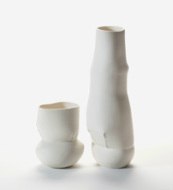 For our purposes Keiko used a blowtorch for fast drying. At home she allows her pots to dry a little, then uses a needle to mark the bottom of the pot before removing it with a wire from the wheelhead. Rather than using pieces of clay to fix her pieces for turning, Keiko uses circles of foam sponge (approx. 15mm thick) under her pots, an especially good technique for pots with irregular rims. Layers of two or three sponge batts can accommodate very irregular rims. Keiko works with two glazes, a clear gloss and a matt white. She decorates using a brush with long bristles that hold a good amount of oxide. She demonstrated decorating with iron oxide, starting from the inside before continuing the lines over the rim to the outside. “Just let your hand go free”, she suggested, and “do not think too much”. Keiko prefers using cobalt oxide and always decorates on top of her glaze. We left with lots of ideas to try out which after all is the test of a good demonstration. Thank you Keiko. Something from a past event this year.
Saturday 28th June was a special day at CCPS. Judy Barrett, our oldest member still potting, generously shared her time and some of her fascinating life story and gave a demonstration of her pottery wheel skills. Judy has been potting for 45 years. She trained under some of Sydney's first potters and knew most of the key people involved in pottery in Sydney from the early 1960's. During our interview with her she mentioned, Velma Boos & Gary Booth who trained with David Leech in the UK. She was around in the early days of the Ceramics Study Group and was part of the experimenting and learning taking place in the Australian pottery scene at that time. Over almost five decades Judy has witnessed the many, many changes that have occurred in Australian pottery. Before pottery, Judy studied at the University of Sydney between 1944 and 1949. In this time she obtained a Bachelor of Science, studied an Honors year and completed a Masters in Biochemistry. Later she travelled to the UK and carried out her Phd studies at Redding University. She is an accomplished and quite remarkable woman. Judy has made pottery her life. She brought up her family from sales of her work and still pots today. Here are a few images from the day. Sunday the 15th of April proved another fabulous day for Raku. 17 potters from CCPS came together to stoke the fires on their self-made Ikea Pedal Bin Raku Kilns for the first time. With great anticipation and excitement 16 kilns were set up, reduction bins lined, kindling attended to and plenty of pots glazed. We were blessed with perfect weather and lots of space to experiment. The first kiln fires were lit by 10:30am. As the day moved on it was apparent there is much more to this kiln than just building it. This wonderfully portable, cost effective and fuel efficient kiln requires careful attention when building up to temperature. Some of us suffered from fire feeding frenzy and others from fire neglect. This highlighted the need to be sensitive to maintaining the kiln's temperature. Running the kiln alone, especially with so many other distractions, takes great concentration. Having a dedicated stoker is an advantage. However, many pieces turned out beautifully and we saw some great results with glazes and reduction. Some of these pieces will be displayed and on sale at our Soiled Reputations exhibition opening Friday 4th May @ The Studio Gallery, Gosford Regional Gallery. It was a wonderful day to share experiences with other potters at a group firing. We look forward to building on our techniques on Saturday 2nd June when our next CCPS Raku firing is planned. A huge thank you to Anniss and Marienne for their organisation of yet another successful even. Here are some images from the day. |
Welcome to the CCPS blog!Central Coast Potters Society is a non-profit, community organisation of like-minded volunteers who love clay. Categories
All
Archives
November 2018
|
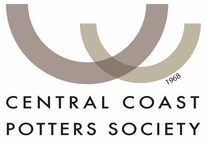
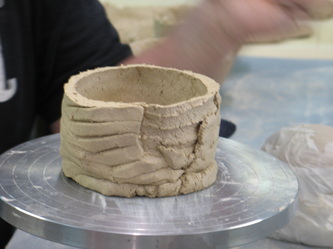
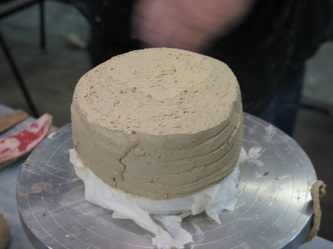
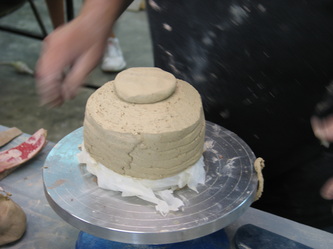
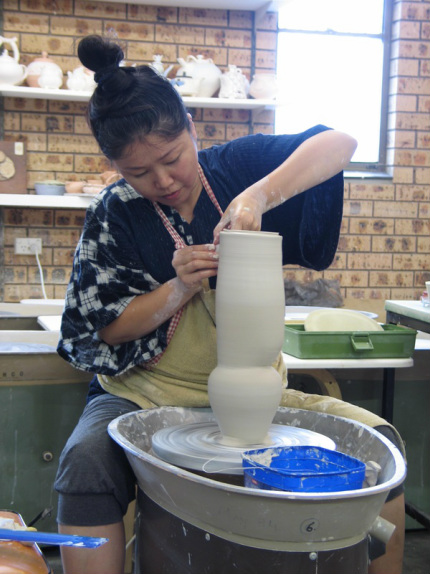
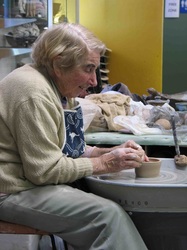
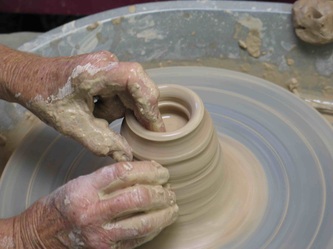
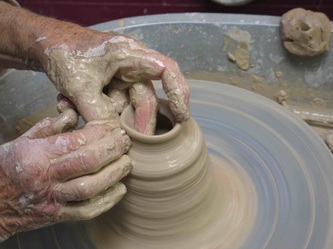
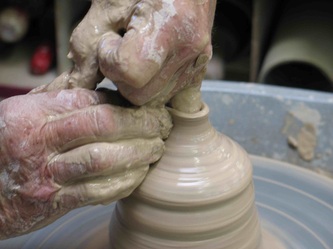
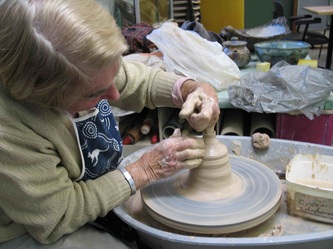
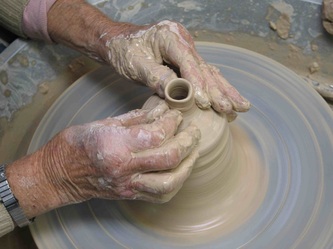
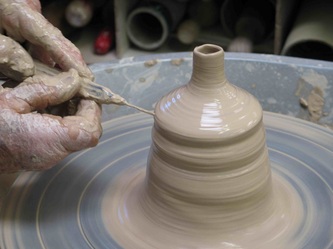
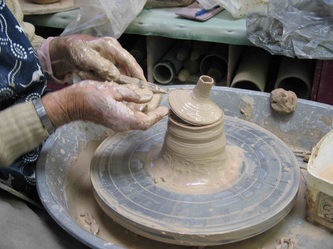
 RSS Feed
RSS Feed
